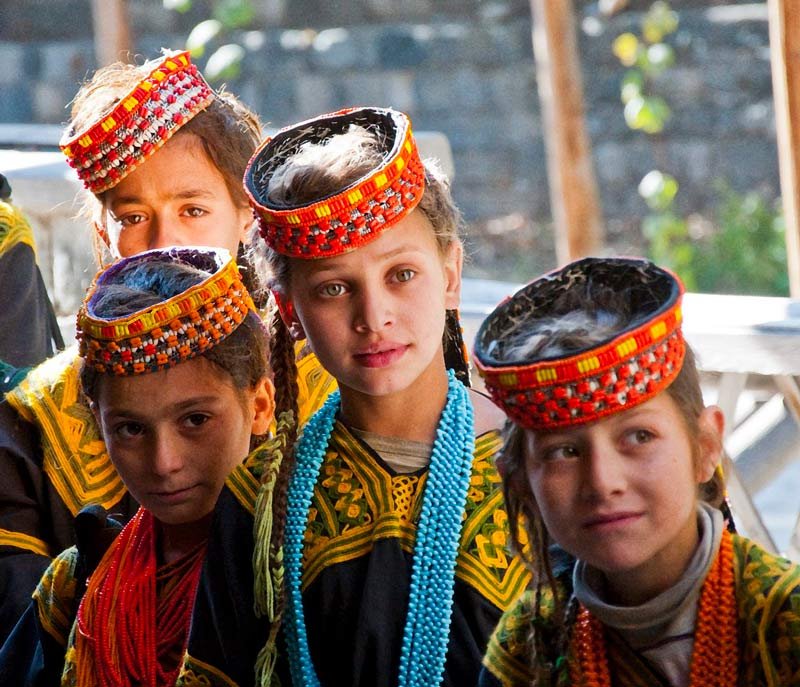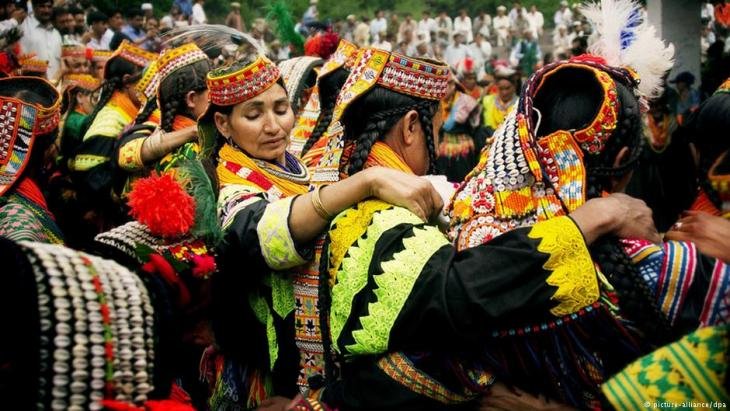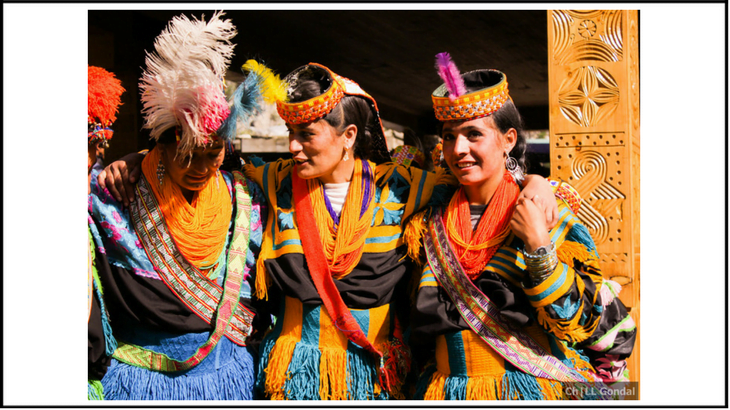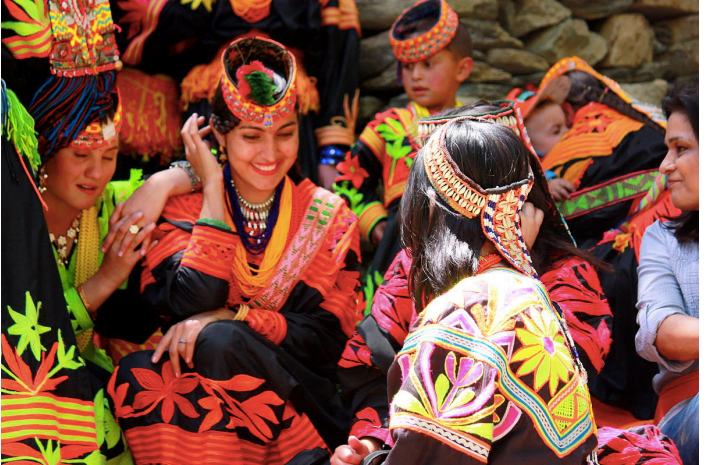People & Culture
Kalash Tribe: The Last Kafir
Published
2 years agoon

The Tribe of Kalash, often referred to as Kafir (non-believer) / Siyah Posh (Black Robed), is estimated to constitute roughly 3,000 people today.
They assert to be decedents of Alexander’s troops. Their origin has remained a mystery, and various levels of research are currently being done to determine their historical and biological lineage.
The remote location Tsiyam, which the Kalash priests and bards mention in their songs during festivals, is believed by many Kalash people to be the origin of their forefathers.
However, nobody is truly certain of the location’s past or present location.
The Kalash people are animists who revere nature and do not want to become Muslims.
This focus on non-conversion can be seen as the main factor contributing to their marginalization in the area.
It is crucial to comprehend the ethnic and sectarian history of the Islamic Republic of Pakistan before delving into a detailed analysis of the Kalash people’s contemporary position.

SEE ALSO; The Thrilling Culture of The “Nyishi Tribe” From India
Pakistan has a long history of opposing the recognition of various ethnic communities. In many ways, this led to the establishment of Bangladesh in 1971 and the several insurgencies that still afflict the nation today.
The nation has alienated its minorities, including the Muhajirs, Balochis, Shi’ites, Ahmadis, Ismailis, and many others, because of an unspoken policy of “othering.”
In the vast landmass to which they belong, which once hosted not only Islam but also Buddhism, Hinduism, and other animistic religions, the Kalash are not even 1% of the population as stated above, but their distinctiveness as well as their combined history and heritage add tremendous value to the region.
With this context, it is possible to understand the Kalash people as an ethnically marginal and demographically tiny minority in a country founded on religious principles.
Who Are The Kalash People
In terms of pure science, human populations exhibit minor allele-frequency variations across geographic spaces, and individuals typically cluster based on their genetic information into groupings that are associated with their particular geographic regions.
Africans, a large group that includes Europeans, Middle Easterners, and South Asians, East Asians, Oceanians, and Native Americans were the five clusters discovered in an early global survey of this kind.
The Kalash population was the only one present when the divisions were expanded to include a sixth group.

The Nuristan Province of Afghanistan in the west, Swat and Gilgit in the east, Pamir Knot in the north, and Lowari Pass in the south all converge in this area.
The Dardic group of Indo-Aryan languages is thought to include the Kalash language.
The language is classified as severely endangered by UNESCO because, like many other tribal languages worldwide, Kalash lacks a standard script.
Even the Pakistani government hasn’t made an effort to capture and preserve this particular language.
Even worse, not a single standard text has been written to date specifically about this culture.
The principal deities revered by the Kalash people in terms of their religious activities are Sajigor, Mahandeo, Balumain, Dezalik, Ingaw, and Jestak. The religious practices of the Kalash people fall into two categories.

The first type can be viewed as both religious and ceremonial, complete with singing and dancing, while the second type can be viewed as strictly religious, devoid of any such revelry. Joshi, Chaumos, Uchaw, and Pul/Poh are a few of their most important holidays.
The Kalash have faced pressure to convert to Islam for nearly millennia despite living in an Islamic state.
In truth, the Kalash people once shared customs and cultural practices with the inhabitants of the Afghan province of Nuristan, which is nearby. Intriguingly, this region was referred to as Kafiristan or the land of the Kafir.
The last remaining inhabitants of Kafiristan, which once included all of northwest Pakistan and eastern Afghanistan before being divided by the Durand Line, the border established between Afghanistan and British India in the 19th century, are the Kalash, who now reside in the valleys of the Hindu Kush.
It is thought that Afghan King Amir (King) Abdur Rahman Khan seized the region in 1895 and ordered the locals to convert to Islam.
He went on to call the region Nuristan, or the “Land of Celestial Light,” earning the nickname “Iron Amir.”
Around this time, the Kalash were violently subdued, their wooden idols and antiquated temples were destroyed, their women were made to burn their traditional clothing and don the burqa, and a large number of individuals were forced to become Muslims.






